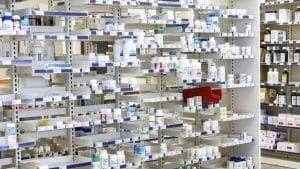Former President Donald Trump announced Sunday that he plans to sign a new executive order on Monday aimed at cutting the cost of prescription drugs for Americans—potentially reducing prices by 30% to 80%.
Trump shared the news on Truth Social, criticizing long-standing price disparities between the U.S. and other countries. “For years, Americans have paid significantly more for prescription drugs—sometimes five to ten times more—compared to other nations, even when the medications are made by the same company in the same facility,” he wrote. “There’s never been a good reason for it.”
![]()
He blamed pharmaceutical companies for shifting the burden of research and development costs solely onto American consumers. “They used to say the high prices were because of R&D, but really, Americans were just getting stuck with the bill,” Trump said. “That ends now.”
Trump emphasized that this move aligns with a goal that Democrats have long supported: lowering drug prices. He announced he would sign what he called “one of the most consequential Executive Orders in our Country’s history” at 9:00 a.m. Monday at the White House. The order, he claimed, will deliver “immediate” price cuts ranging from 30% to 80%.

He also introduced a “Most Favored Nation” pricing policy, which would ensure the U.S. pays no more for prescription drugs than the country that pays the lowest price worldwide. “This is about fairness,” Trump said. “Healthcare costs for Americans will drop dramatically, and the country could save trillions.”
Last month, Trump signed another executive order aimed at aligning Medicare drug payments—especially for cancer medications—regardless of where treatment is received. The White House said that measure could cut costs for patients by as much as 60%.
That order also called for Medicare to pay no more than hospitals do for some prescription drugs—up to 35% less than the government currently spends. Additional provisions sought to lower insulin prices for low-income and uninsured patients to just a few cents per dose, and to make injectable epinephrine (used for allergic reactions) available for as little as $15 plus a minor administrative fee.
The administration also aimed to help states lower drug costs by expanding importation programs and supporting Medicaid deals for expensive medications like those treating sickle-cell disease.

Under this new order, the Department of Health and Human Services—now led by Robert F. Kennedy Jr.—is also tasked with gathering public feedback on the Medicare Drug Price Negotiation Program. That program, created under the Biden administration’s Inflation Reduction Act, allows Medicare to negotiate directly with pharmaceutical companies.
Prescription drug prices have surged in recent years. Between January 2022 and January 2023, prices increased over 15%, with the average cost of a prescription reaching $590. Nearly half of the drugs analyzed increased in price faster than inflation, according to the Department of Health and Human Services.
During his first term, Trump introduced a $35 cap on insulin under Medicaid, one of several earlier attempts to bring down drug costs.

